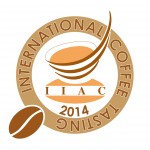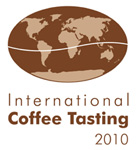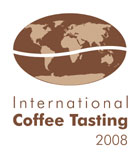By Manuela Violoni, R&D manager at the Taster Study Center
Cream, gustative balance, aromas: three aspects of espresso which, according to tests, are influenced by the cup. The New Taster Cup is the result of three years of sensory experimentation, it is a improvement of the official tasting instrument of the International Institute of Coffee Tasters which values good coffees and punishes bad ones
 If the glass influences the perceived characteristics of a wine, this is three times truer for the cup in that it influences not only the way in which the senses approach the beverage but also the physical status of the beverage itself: the temperature and the way in which the components of the cream surface. All these aspects have been kept into account during the experimentation to which the Tasters Study Centre has participated for the part on sensory analysis while Forever has dealt with technical issues. The New Taster Cup has been designed to optimise its performance in all stages of its use, not only from the point of view of tasting but also to support the barista in preparing a perfect espresso.
If the glass influences the perceived characteristics of a wine, this is three times truer for the cup in that it influences not only the way in which the senses approach the beverage but also the physical status of the beverage itself: the temperature and the way in which the components of the cream surface. All these aspects have been kept into account during the experimentation to which the Tasters Study Centre has participated for the part on sensory analysis while Forever has dealt with technical issues. The New Taster Cup has been designed to optimise its performance in all stages of its use, not only from the point of view of tasting but also to support the barista in preparing a perfect espresso.
Less stackable, more equilibrium of tastes
The external shape of the New Tasters Cup is designed in a way which makes it difficult to stack it in more than two rows. This is how all the cups reach the optimum temperature which is necessary to keep the gustative equilibrium of the beverage. Even the barista who does not know it will naturally follow this simple rule, thus automatically eliminating a frequent mistake made during preparation.
Elliptical bottom for a more persistent cream
The internal shape of the cup materially influences the formation of the cream. Actually it is mainly made up of fibres and fats which are in the coffee: when the espresso drips from the spout to end up in the cup, the convective movements inside of it make these components, along with the aromas of the coffee, surface. A flat or cone-shaped bottom hinder these movements, which are on the contrary favour by the elliptical interior. The New Taster Cup is designed to optimise this stage which gives a finer and more persistent to the sight cream with greater formation of the prestigious stripe-effect and with a more powerful aroma.
Clear level, no more extraction levels
In the New Taster Cup an internal mark indicates the optimum extraction level for the espresso: 25 millilitres. Not only no more short or too watered espresso but it also makes it easier for the barista to regulate the grinding: fixing extraction at 25 millilitres in 25 seconds is an easy criterion to avoid mistakes of over-extraction or under-extraction, burning the coffee or not extracting enough its aromatic or tactile potential. The internal mark makes this easier allowing the barista to keep the correctness of the grinding and of the pressing monitored at each extraction.
Brighter white, nicer cream
In order to correctly assess the colour of the cream of the espresso, the cup must be white inside. The super-white porcelain with which the New Taster Cup is made is something new on the Italian stage, to the extent that if you put it next to the traditional cups the latter look grey and opaque. The perfect and brilliant white of the porcelain make the most of the reflections of the cream of a good espresso and of the brightness of its surface. This is not nothing, given that consumers makes assessments especially with their eyes.
Lighter, more elegant
Following a trend from tasting glasses designed for wines, the New Taster Cup weights 27% less than the previous model. This conveys a sensation of greater elegance and makes it easier to hold the cup thus allowing the taster to better focus on the sensations.
Varying thickness, more non-conductivity
The reduced weight does not mean that the New Taster Cup is thin to the point that it does not ensure that the right temperature is maintained. The secret is in the varying thickness, greater towards the bottom where the espresso is contained and lower towards the top with which the lips come into contact. This makes it possible to fully exploit the non-conductive nature of the porcelain, an excellent thermal insulating material, without making the lips feel a sensation of thickness.
More room at the top, wider aromas
Just as with wine glasses, also the cup must not be filled up to the edge: it is necessary to leave enough room at the top, meaning room for the aromas to set free from the liquid and concentrate in the air so as to be directed towards the nose. More room at the top allows for the aromas to become wider: this is the reason why in the New Tasters Cup it has been increased by 10%. This, together with the internal shape of the upper part of the cup, makes it possible to better perceive certain aromatic notes.
Greater hygiene, more aromatic freshness
Even when the tasting phase is over, the way in which the cup is treated is important for the correctness of the following assessment. A critical aspect of the hygiene of the cup is the bottom: if it is not adequately designed, there is the risk that the washing-up powder from the dishwasher might pile up. The detergent then drips on the border when the cup is removed from the dishwasher and placed on the cup warmer. The New Taster Cup features some grooves designed to make any residual washing powder flow away completely.
The New Taster Cup vs the previous model
The data clearly show that the same espresso, tasted in the New Taster Cup, appears to be nicer than when tasted in the previous model, with an Edonic Index of 7.70 vs 6.78. The reasons for this lay in a number of factors: first of all, the appearance of the cream, the colour of which shows out better in the super-white porcelain. At a tactile level, the espresso has more body, due to the cream being formed in an optimal way and to volume control, which optimises extraction. The bitterness is less sharp and the aromas are valued, especially the prestigious spicy notes ranging from rhubarb to liquorice and which convey a precious note to the sensations persisting in the mouth.
The New Taster Cup highlights huge differences compared to the previous one also at the level of the visual and tactile impact of the object itself. The colour strikes more than the previous one and makes it stand out compared to the more wide-spread cups. Overall, it’s more elegant and stylish even if its shape can still be defined as classic, It’s deemed to be more modern and ‘cheerful’. At the touch, it gives more pleasant sensations due to its being lighter. It’s easier to hold, the shape and the surface have been improved. Finally, its border conveys a sensation of enhanced fineness to the lips. Despite the fineness, use at the coffee shop too is recommended.
 The sixth edition of the International Coffee Tasting will be held in Brescia (Italy) on October, 21-22. The commissions of the International Institute of Coffee Tasters, the scientific and independent association that concentrates exclusively on the sensory analysis of the coffee, will meet in Brescia to evaluate samples of coffees coming from all over the world.
The sixth edition of the International Coffee Tasting will be held in Brescia (Italy) on October, 21-22. The commissions of the International Institute of Coffee Tasters, the scientific and independent association that concentrates exclusively on the sensory analysis of the coffee, will meet in Brescia to evaluate samples of coffees coming from all over the world. The third edition of International Coffee Tasting will be held in Brescia (Italy) on October, 26-27. The commissions of the International Institute of Coffee Tasters, the scientific and independent association that concentrates exclusively on the sensory analysis of the coffee, will meet in Brescia to evaluate samples of coffees coming from all over the world.
The third edition of International Coffee Tasting will be held in Brescia (Italy) on October, 26-27. The commissions of the International Institute of Coffee Tasters, the scientific and independent association that concentrates exclusively on the sensory analysis of the coffee, will meet in Brescia to evaluate samples of coffees coming from all over the world. If the glass influences the perceived characteristics of a wine, this is three times truer for the cup in that it influences not only the way in which the senses approach the beverage but also the physical status of the beverage itself: the temperature and the way in which the components of the cream surface. All these aspects have been kept into account during the experimentation to which the Tasters Study Centre has participated for the part on sensory analysis while Forever has dealt with technical issues. The New Taster Cup has been designed to optimise its performance in all stages of its use, not only from the point of view of tasting but also to support the barista in preparing a perfect espresso.
If the glass influences the perceived characteristics of a wine, this is three times truer for the cup in that it influences not only the way in which the senses approach the beverage but also the physical status of the beverage itself: the temperature and the way in which the components of the cream surface. All these aspects have been kept into account during the experimentation to which the Tasters Study Centre has participated for the part on sensory analysis while Forever has dealt with technical issues. The New Taster Cup has been designed to optimise its performance in all stages of its use, not only from the point of view of tasting but also to support the barista in preparing a perfect espresso. International Coffee Tasting 2008 will be the record-setting competition. Actually, more than 140 coffees from all over the world have registered for the biennial competition organised by the International Institute of Coffee Tasters. A sharp increase of the number of coffees compared to the first edition in 2006, during which, for the first time ever, tens of coffees were assessed by commissions made up of judges from the International Institute of Coffee Tasters. «A unique initiative which already in 2006 attracted also the attention of the media – said Odello – The mission of the International Institute of Coffee Tasters is that of promoting a scientific method for coffee tasting. Praising the best products of the sector means also rewarding those who work in a competent manner in order to provide consumers with a truly high quality coffee». Currently, the tasting commissions made up of tasters, both Italians and foreigners, from the Institute are being formed. See you all then on the 30th-31st of October when the international competition will take place in Brescia.
International Coffee Tasting 2008 will be the record-setting competition. Actually, more than 140 coffees from all over the world have registered for the biennial competition organised by the International Institute of Coffee Tasters. A sharp increase of the number of coffees compared to the first edition in 2006, during which, for the first time ever, tens of coffees were assessed by commissions made up of judges from the International Institute of Coffee Tasters. «A unique initiative which already in 2006 attracted also the attention of the media – said Odello – The mission of the International Institute of Coffee Tasters is that of promoting a scientific method for coffee tasting. Praising the best products of the sector means also rewarding those who work in a competent manner in order to provide consumers with a truly high quality coffee». Currently, the tasting commissions made up of tasters, both Italians and foreigners, from the Institute are being formed. See you all then on the 30th-31st of October when the international competition will take place in Brescia. In the next few years it will not be easy to keep up with innovation in the coffee sector, but, no doubts, it will be a fascinating time. In this issue of Coffee Taster, we shall deal with sensorial trends and what the big companies say with regard to the methods they use to monitor quality. Not far from now, at EISday2008, the annual conference of the Italian Espresso National Institute on the 24th of February, we will focus on the findings of the biggest ever research which has been conducted into the quality of coffee.
In the next few years it will not be easy to keep up with innovation in the coffee sector, but, no doubts, it will be a fascinating time. In this issue of Coffee Taster, we shall deal with sensorial trends and what the big companies say with regard to the methods they use to monitor quality. Not far from now, at EISday2008, the annual conference of the Italian Espresso National Institute on the 24th of February, we will focus on the findings of the biggest ever research which has been conducted into the quality of coffee.
